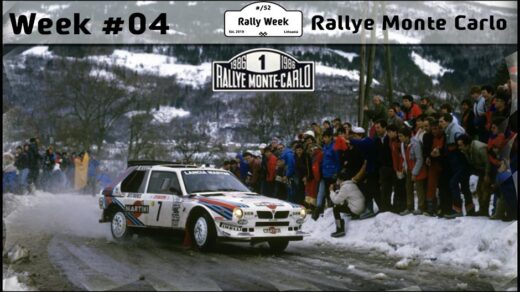Recently, we have a look at the Top Fry Rally, which is a race between historic cars and, quite often, historic drivers. This time the theme is very similar – the same historic cars with the same historical drivers as Stig Blomquist, Timo Salonen, or the father of legendary Colin Mcrea – Jimmy Mcrea. The difference is one but fundamental. At an event like the Vosges Rallye Festival in France or the Eifel Rallye Festival in Germany, there is no counting time for the stages, so there are no results after the rally.

So what is the point of such events when one of the fundamental principles of racing seems to be violated?
In such rallies, the first violin is played by the cars themselves, not their crews. And car control is quite tight. Cars must be as similar as they can be to their original version. The same applies to Replica cars. From mechanical parts to visual look. For example, if any Mini Cooper S had glass windows, they should be glass, not plastic. Personal sponsor stickers are prohibited as the promotion of the new iPhone on the 1986 Audi Quattro S1 just doesn’t fit. There are a few exceptions when it comes to security, where a more advanced roll cage is allowed. This is a major challenge for restorers, as information about a particular model is often lacking, but the community is very strong, and as a result of the combined efforts, truly exceptional models have been restored. So in this type of competition, there is definitely something to see. Starting with Group B monsters like the Lancia Delta S4, Audi Quattro, Peugeot 205, or older WRC models like the Ford Escort WRC or Toyota Corolla WRC. And ending with such exquisite and rare models, many of which have neither seen nor heard of them. For example, Simca Rallye 3, Clan Crusader, DAF 555.
The organizers declare that in this type of competition, the participants are not racing against each other, but racing with each other. This highlights the wonderful and very friendly atmosphere. And when there are no results, much less tension and overall mood are quite different. And it’s not necessary to take a recce for a pace notes. Some participants drive faster and more spectacularly, while others are simply taking a gentleman to drive through the stage. Roads are also chosen with great diligence to minimize the damage to historic cars, often worth at least several hundred thousand euros. There are of course incidents of boiled blood behind the wheel or just old age and no good reflexes when trying to control a Group B car. The driving style is very well described by the term – “Slowly sideways”.
And those historic masterpieces are driven by mostly old legend drivers, collectors, or just fans of this motorsport. As mentioned, we can often meet legendary Group B drivers like Walter Rohrl, Stig Blomquist, Mark Allen. Some of the older times or former co-drivers, e.g. C.Mcrea companion Nicky Grist.
Often at least one hundred and sometimes close to two hundred crews attend such events. So the thousands of spectators who come have a chance to see the living history of almost all postwar rally. And for participants, this is a great opportunity to ride old horses with minimal risk of damage and meet like-minded people from all over the world.
Say Thank You and become a part of Rally Week
Photo – https://www.autonewsinfo.com












